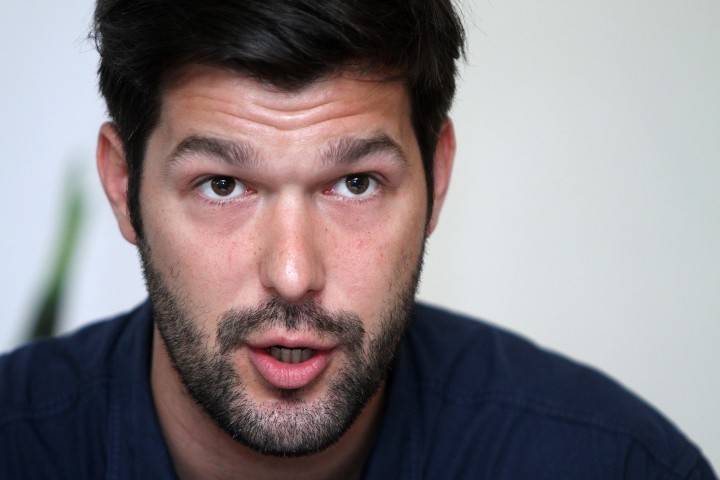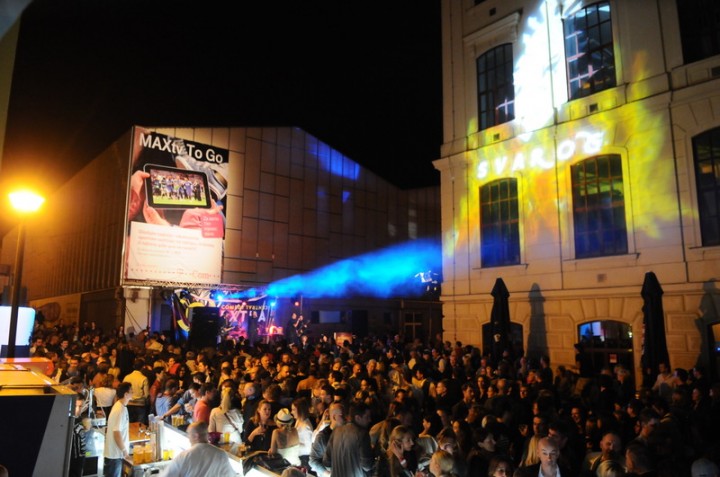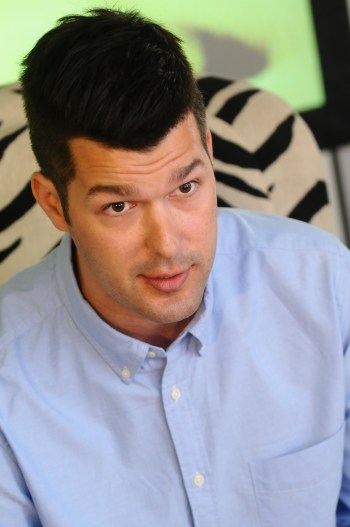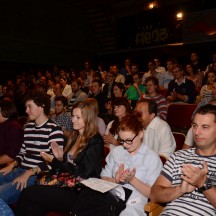Meet Gingernet CEO, the founder of a full service digital agency and Program Director of the largest regional media festival. Nikola introduces the projects that rushed the digital revolution in Eastern European region and shows his passion while talking about social media.
You are active in many different ways – a head of an agency, a program director for a big conference, even member of board for an Academy for Political Development. What is the path that led you there?
I work on many projects and organisations besides my job. In school I have studied Economics in New York and then Political Science in Zagreb and I still love those fields. That is the reason I have always thought that I am going to work in the filed of Development Economics or some supranational organisation. I ended up in digital by accident. Together with my colleague from Belgrade we have noticed the need in the market in the growing field that offered so many opportunities. Today I enjoy this fast changing field but I am still planning to stay active in the domains of my primary interest.
There are many interesting projects with your name on them. Let’s start with the Weekend Media Festival, the largest regional communication festival, announced for September 2013. As you are the Program Director and member of the founding team, I assume it took enormous enthusiasm to organize such a distinguished event in the region.
Exactly! And now, after 6 years, the Weekend Media Festival has become more than a festival of media and communication. We are interested in everything around the new business models because borders between different markets are disappearing. Communication and media have become ubiquitous. Some people say that we are becoming media, too. I totally agree with that. We listen to, see and follow the changes. We decided to stop defining the borders when it comes to “media”, “digital” or “communication” because they are becoming more difficult to be defined indeed. The Weekend Media Festival is a perfect place for presenting the market changes.
The festival destination, Rovinj, seems a good choice. What made you choose it among all the other beautiful destinations in Croatia?
Its stunning beauty, definitely! But Rovinj is also a brand, well-known in Serbia and other Eastern parts of what was Yugoslavia. And when we invite Americans over to the festival, we send them a photo of Rovinj and suggest them to spend few more days there. They are delighted when they see that. They join us every year and this made me realize how important it is to have an impressive destination for such an event.
I hear you transformed a parking space into a festival venue. Was that the initial idea or was it something that just happened?
Well actually, at that time, Tomo Ricov and Boris Kovaček, the founders of the Weekend Media Festival, were going to open a new tobacco factory in Rovinj. When they went to see the old factory, they just couldn’t believe what a fantastic place that was! But they didn’t understand why in the world it was just a parking space when it had such a huge potential of becoming something much more. Today, thanks to them, the space is one of the most widely used festival venues in Croatia. Microsoft uses it for their Win Days conference, too.
This year the Weekend is going to present new business opportunities in the European market and the strategic influence of social media on marketing processes. How are you going to do it?
Apart from the panels where we will discuss the most important market issues in the region (TV, print, the Internet, technology), we aim to cover all the important changes that have recently happened in the region and in the rest of the world. That’s why we’ve invited the top international lecturers who will present the most important trends. For example, this year we’ve invited Tom Buday, the Global Head of Marketing and Consumer Communication of Nestlé Corporate Brand. Nestlé proved to have a really good social media content strategy. This will be a perfect example for Croatian companies and no doubt Mr. Buday will have a huge impact on many social media stories in Croatia. We’ve also invited professor Kfuri. He will talk about strategic social media leadership.
You’ve been into social media since the beginning. What’s new in the Croatian social media scene?
We’ve realized that everybody is into social media, but not everybody knows what to do with them. Many big companies have started to use social media, but most of them don’t know how to present themselves, how to measure ROI, understand the benefits of social media, balance and coordinate all the channels, etc. We’ve realized we need a different approach, not just a practical way, but also a strategic one.
Which social media platform is the most important in this region?
In Croatia it’s Facebook. Social media penetration is extremely high when you compare it to the Internet penetration. Facebook has knocked down the market in no time. It’s interesting to know that the engagement is much higher than in other “Northern” countries. This is caused by our cultural habits.
Serbia can be an example of an incredible engagement, too. But unlike Croatians, the Serbs have started to use Twitter. All Serbian politicians and celebrities have Twitter accounts. It’s their mass “pop” media, a phenomenon. Everyone who wants to get the latest information must have a Twitter account. Even political fights can be followed on Twitter in Serbia. Croatian celebrities and politicians are more socially withdrawn on their social media profiles.
I’m sure you can single out your favourite social media breakthrough in the region for Babel Guide readers.
Yes, absolutely. I find the case of Pantela fascinating. There is a national football star, Marko Pantelić, widely known in his home country for his alter ego „Pantela“ on Twitter and Facebook, his fake profiles. The squabble and humour they provided was outstanding! A new jargon even came out of that story. And that social media jargon Pantela created was later used in real life and media in Serbia. You could actually see posts and stories written with Pantela jargon. It was widely spread and extremely hilarious.
Have you experienced the true power of social media? Can you share some of the successful cases with our readers?
Sure! Again I have to mention Pantela. They have organized a flash mob on Internet. They announced that a certain YouTube movie would be attacked at a certain hour and 40,000 people left their comments on the YouTube at that time. Then some Polish people recognized them and joined them in their action of “invading” YouTube movies. The most spectacular thing was the attack at Angelina Jolie on IMDb when they considered her comment anti-Serbian. Thousands of people joined IMDb and rated Angelina Jolie and her movie In the Land of Blood and Honey with the lowest grade. This is a great example of how powerful social media can be. Imagine, only one profile controlled a mass of people on IMDb and crashed Angelina Jolie. Isn’t that amazing?
How does digital Croatia look like from your own perspective?
Well, the digitalization development in Croatia is still unsatisfactorily. And that is what we push to change at the Weekend. The panel we’re organizing, “Croatia Inc. Goes Digital” will present four big corporations which have taken it seriously and set-up digital departments. That is a major step forward. Big corporations have budgets and staff looking after all channels. This shows bridging between marketing and digital departments.
So what would be a perfect match for complete and successful digital communication?
There is a vast value chain that needs to be considered. Regulators, agencies, media, corporations, payment service providers, card issuers – an array of influencers. In Croatia, regulators fall behind the most. When e-commerce starts to develop more, digital agencies will develop, too. The reason why e-commerce still doesn’t reach a satisfying level is the low usage of credit cards; consumer protection is low, payment service providers expensive, and credit card fees high. So it’s very important to change the whole chain of key players.
But it’s good to know that a big step forward has already happened. Big corporations push other influencers and middle-sized companies follow their example. It’s also a great opportunity for small companies since digital environment increases their efficiency, lowers their advertising expenses and takes down the advertising market barrier.
Can you see any barriers in the digital media use by Croatian companies? Are you satisfied with your clients’ approach?
Croatian companies do seem a bit more conservative because they do business in a pretty closed market. But this depends on the industry. For example, telecommunication companies must respond quickly to changes and that’s why they recognized digitalization before the others. They have digital departments and they produce digital content. On the other hand, there are industries that catch up with digitalization slowly, but still don’t use it to the fullest.
Could the reason be the economic crisis?¨
Yes. The digital revolution started when the economic crisis hit the markets. Some media (particularly the print) experienced an attack by the Internet and the content democratization. At the same time, they were hit by the economic crisis. If there was no crisis, they would have stepped into the changes faster and easier. It’s easier for them to protect their current business domain rather than implement new technology at the moment.
Who is the digitalization leader in your opinion?
There are many companies that push digitalization strongly. I can definitely mention the big four (Google, Facebook, Amazon, and Apple). However, I would also like to mention American Express. This example from the financial industry may sound unexpected. What I like about them is that when they plan something new, they organize an internal start-up, separated from all internal procedures and regulations. They take new possibilities pretty seriously, yet they are very open-minded.
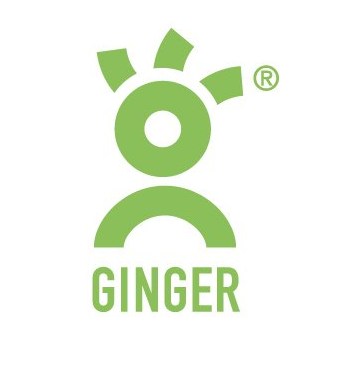 In 2009 you founded Gingernet, a digital marketing agency. Back then you had only 2 employees, but it soon turned into a strong agency with the highest revenue in Croatia. What’s your secret?
In 2009 you founded Gingernet, a digital marketing agency. Back then you had only 2 employees, but it soon turned into a strong agency with the highest revenue in Croatia. What’s your secret?
At that time I was working for Digitel Grupa as an advisor to the board. We had an opportunity to start a digital agency and it sounded challenging. After having a few minor clients, we experienced a breakthrough when we acquired Hrvatski Telecom which was already one of the Digitel Grupa clients. Then we started to grow rapidly. Nowadays we provide our clients with innovative digital solutions – and we do this for the whole Digitel Grupa too.
In 2011, you also took over the position of Chief Innovation Officer of Digitel. How innovative that was for the agency?
As a matter of fact, it was very innovative. The idea was to transform a creative agency into a digital one. I believe future creative agencies will emerge from digital agencies. Or creative agencies will transform into digital ones. It will not be possible to have a creative and digital agency, it won’t work that way. There are no campaigns designed for a creative platform and then redesigned for a digital one. Creative process must take a digital approach from the very start. That’s exactly what we did for Digitel Grupa.
Can you mention the projects that came out of that transformation from the creative into the digital?
Bon Bon, the first virtual mobile operator in Croatia. The prepaid mobile Internet. That was one of the key moments for digitalization in Croatia. All of a sudden, a lot of people started using mobile Internet. It also brought the first truly Internet-based customer support. Everything was Internet-based. That was a huge change!
I’d also like to mention the humanitarian campaign “Korak u život”. We started to turn „likes“ into money a few years ago. We’ve managed to gather a lot of people and a huge amount of money for the biggest humanitarian project in Croatia. Million HRK per year are collected. The whole system of children education has had changed.
One of the most interesting projects is definitely the interactive web community and VOD platform. How did the football fans respond to virtual money?
They responded very well, actually. Together with Tribina.hr, project we enabled the fans to read and engage with good, quality comments (moderated so there are no vulgar, racist or dishonest comments). When they sign in and leave good comments, they collect vingds (virtual money) which can be used to buy video on demand – and watch football matches on-line. They would usually have to pay more, but here we help them to get it for free. We came up with a completely gamified platform (including levels, badges etc.). The most active fans get press accreditations. Fans provide us with quality content that other people want to read and are rewarded for that. It’s a win-win strategy and a very successful project.
You’ve been inspired by many creative urban projects, including street art. How do you contribute to them?
I started “Platform 404” for them which lasted for a year. Since the Internet portals sell 20–30% of their inventory, we thought about what to do with it. We involved 40 media into this idea. Creative projects that applied for Platform 404 got a free Internet inventory, so projects started to launch rapidly. The best example is the Street Art Museum – a project dedicated to forming a more coherent street art scene in Croatia.
5 pieces of advice from Nikola Vrdoljak…
What should agencies take into account in their future business steps?
They should create their own projects/products. Some Americans agencies, such as Huge or Spaceship, have already started to do so: they are not only agencies, but they also create their own stuff, establishing their own start-ups. The media/agency/client relationship has been shaken, especially in classical, old-school marketing.
As a consultant, what advice do you usually give to the companies?
I am extremely interested in transforming companies. I plan how to develop their digital departments, create their image and bring in e-commerce. Creating and selling a campaign is not enough these days. Companies welcome transformation, and that is what we offer them.
What do you think about mobile advertising?
The mobile Internet is spreading widely and rapidly, but mobile advertisers should remember that old ways of advertising do not work on mobiles. Full page takeovers and other formats? Forget about them! We don’t want our everyday life to be spammed, but we accept smart, content-based advertising. We don’t want billboards on mobile and banners are not an option, either. What we need is a breakthrough communication style.
What is the communication channel of the future?
Definitely video, because video content is easy to create and edit. Take Instagram, for example. It has introduced video as well. We can expect a video boom soon, you’ll see.
How would you advise the readers, as far as high brand awareness, quality content, and impressive social media appearance is concerned?
My first advice is: if you don’t want to invest time and money, don’t bother. Taking professional care of social media profile is a serious job and it requires quality time. If you do it properly, you’ll get results. But remember that it’s a long-term and constant process, especially when it comes to content creation. It should be measurable and it should always be beneficial and goal-oriented.
Find Nikola Vrdoljak on LinkedIn / Twitter.
This post was written by Martina Vuksan: follow her on Twitter, connect on LinkedIn or Facebook.
